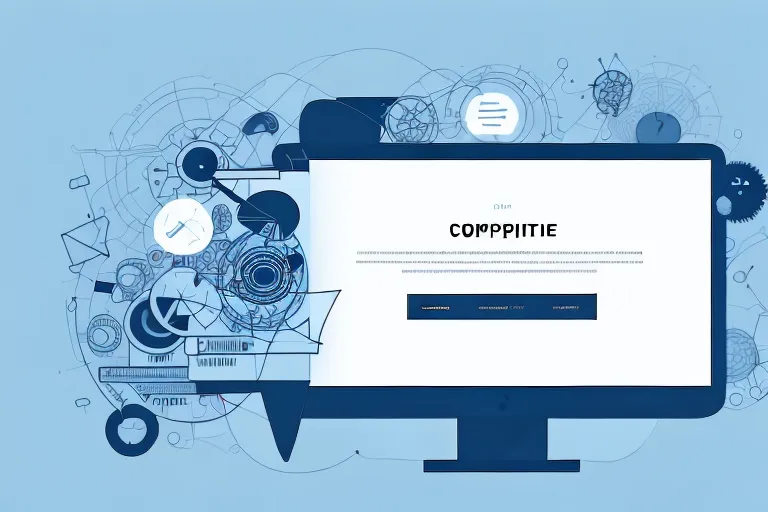How to Create RCS Business Messaging Templates for Efficient Campaign Management

If you want your business messaging campaigns to be efficient and effective, you need to create RCS business messaging templates that can grab your target audience's attention and deliver your message effectively. In this article, we will discuss how you can create efficient RCS business messaging templates that can save you time and improve your campaign management.
Understanding RCS Business Messaging
RCS stands for Rich Communication Services, and it's an advanced messaging protocol that enhances the capabilities of SMS messaging by adding multimedia messaging and interactive features. With RCS, businesses can create engaging and personalized messages that can be delivered seamlessly across mobile devices and platforms.
But what does this mean for businesses? How can RCS Business Messaging benefit your brand and help you connect with your target audience? Let's take a closer look.
What is RCS Business Messaging?
RCS Business Messaging is a variant of RCS that's designed for commercial use. It's an upgraded version of SMS messaging that allows businesses to create rich media content, interactive elements, and personalized messaging for their customers. RCS Business Messaging has many benefits that can help your business to connect with your target audience and enhance your brand reputation.
One of the key features of RCS Business Messaging is its ability to support multimedia content. This means that businesses can include images, videos, and other rich media elements in their messages, which can help to capture the attention of their target audience and make their messages more engaging.
Another important feature of RCS Business Messaging is its support for interactive elements. This means that businesses can include buttons, menus, and other interactive elements in their messages, which can help to guide their customers towards a particular action, such as making a purchase or booking an appointment.
Benefits of RCS Business Messaging for Businesses
The benefits of RCS Business Messaging for businesses are numerous. Firstly, it helps businesses to deliver their messages effectively and efficiently. Unlike traditional SMS messaging, which is limited to plain text, RCS Business Messaging allows businesses to create rich, engaging content that can capture the attention of their target audience and drive conversions.
Secondly, RCS Business Messaging empowers businesses to create personalized, engaging messages that can capture the attention of their target audience. By including multimedia content and interactive elements, businesses can create messages that are tailored to the interests and preferences of their customers, which can help to build stronger relationships and enhance brand loyalty.
Thirdly, RCS Business Messaging enables businesses to track and analyze their messaging campaigns. This means that businesses can monitor the performance of their messages, track customer engagement, and refine their messaging strategies to improve their results over time.
Overall, RCS Business Messaging is an essential tool for businesses that want to connect with their customers in a meaningful way. By leveraging the power of multimedia content and interactive elements, businesses can create messages that are engaging, personalized, and effective at driving conversions.
Setting Up Your RCS Business Messaging Platform
Are you ready to take your business messaging to the next level? Before you create your RCS business messaging templates, you need to set up your RCS business messaging platform. This involves choosing the right RCS business messaging provider and integrating it with your existing systems.
But don't worry, we've got you covered. Here are some tips to help you get started:
Choosing the Right RCS Business Messaging Provider
Choosing the right RCS business messaging provider can make a huge difference in the success of your messaging campaigns. With so many options out there, it can be overwhelming to know where to start. Here are some factors to consider when choosing an RCS business messaging provider:
- Cost: Make sure the provider's pricing fits within your budget.
- Reliability: Look for a provider with a proven track record of reliability and uptime.
- Security: Ensure that the provider offers the necessary security measures to protect your data and your customers' data.
- Features: Consider the features offered, such as chatbots, analytics, and customization options.
- Support: Look for a provider with responsive and helpful customer support.
By considering these factors, you can find an RCS business messaging provider that best meets your business needs.
Integrating RCS Business Messaging with Your Existing Systems
To ensure that RCS business messaging is fully integrated into your existing systems, you need to work with your provider to integrate it with your CRM, marketing automation, and customer service platforms. This will allow you to streamline your messaging campaigns and ensure that all your customer touchpoints are consistent and cohesive.
Integrating RCS business messaging with your CRM can help you track customer interactions and personalize your messaging. Marketing automation integration can help you automate your messaging campaigns, saving you time and ensuring that your messaging is consistent across all channels. And integrating with your customer service platform can help you provide seamless support to your customers.
Overall, setting up your RCS business messaging platform is a crucial step in taking your business messaging to the next level. By choosing the right provider and integrating it with your existing systems, you can create messaging campaigns that are effective, efficient, and engaging.
Designing Effective RCS Business Messaging Templates
Once you have set up your RCS business messaging platform, it's time to start designing effective messaging templates. This involves identifying your target audience, crafting compelling message content, and incorporating rich media and interactive elements.
Identifying Your Target Audience
Identifying your target audience is essential to creating effective messaging templates. You need to understand your audience's demographics, preferences, and pain points to create messaging that resonates with them. You can use segmentation tools to create customer segments based on various criteria, such as location, age, and interests.
Crafting Compelling Message Content
The content of your messaging template is critical. Your messaging should be concise, clear, and compelling. It should communicate the benefits of your product or service and create a sense of urgency. You can use personalization tools to customize your messaging templates based on your customer's name, location, or previous purchase history. This can increase the relevance of your messaging and improve engagement.
Incorporating Rich Media and Interactive Elements
The use of rich media and interactive elements can make your messaging templates more engaging and memorable. You can use images, videos, GIFs, and emojis to enhance your messaging and convey your brand personality. Interactive elements such as clickable buttons, surveys, and quizzes can increase engagement and improve user experience.
Organizing Your RCS Business Messaging Campaigns
Once you have created your messaging templates, it's time to organize your RCS business messaging campaigns. This involves segmenting your audience for personalized messaging, scheduling and automating your messaging campaigns, and tracking and analyzing campaign performance.
Segmenting Your Audience for Personalized Messaging
Segmenting your audience based on various criteria allows you to create personalized messaging that resonates with different customer segments. You can use demographic, behavioral, and psychographic segmentation to create customer personas and messaging templates that appeal to them. Personalized messaging can improve engagement and increase conversion rates.
Scheduling and Automating RCS Business Messaging Campaigns
Scheduling and automating your messaging campaigns can save you time and improve your campaign management. You can use scheduling tools to send your messaging at the right time, based on your customer's time zone and behavior. Automation tools can trigger messaging based on specific customer actions, such as a website visit, cart abandonment or purchase. This can create a seamless customer journey and improve user experience.
Tracking and Analyzing Campaign Performance
Tracking and analyzing your messaging campaigns is essential to refine your future messaging strategies. You can use analytics tools to measure key metrics such as open rates, click-through rates, and conversion rates. This can help you to identify what works and what doesn't and refine your messaging accordingly.
Best Practices for RCS Business Messaging Templates
To ensure that your RCS business messaging templates are effective and efficient, you need to follow some best practices. These include maintaining brand consistency, ensuring message clarity and relevance, and optimizing your templates for different devices and platforms.
Maintaining Brand Consistency
Maintaining brand consistency across all your messaging is critical to building brand recognition and trust. Ensure that your messaging templates follow your brand guidelines in terms of fonts, colors, and tone. This will make your messaging recognizable and memorable.
Ensuring Message Clarity and Relevance
Ensure that your messaging is clear, concise, and relevant to the customer's needs. Avoid using jargon or technical terms that might confuse the customer. Keep your messaging focused on the benefits of your product or service and how it can solve the customer's pain points.
Optimizing Templates for Different Devices and Platforms
Ensure that your messaging templates are optimized for different devices and platforms. Use responsive design to ensure that your messaging templates display correctly on mobile devices and desktops. Test your templates on various platforms, such as Android and iOS, to ensure that they work seamlessly across different channels.
Conclusion
In conclusion, creating efficient RCS business messaging templates is critical to improving your campaign management and enhancing your brand reputation. Remember to set up your RCS business messaging platform correctly, design effective messaging templates, organize your campaigns effectively, and follow best practices. By following these steps, you can create messaging campaigns that resonate with your audience and help you achieve your business objectives.
